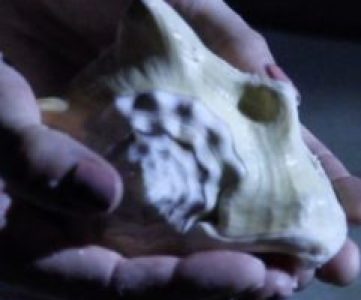TT Journal, ISSUE 6, September 2023
By Krzysztof Fijalkowski and Victoria Mitchell
Play Group
The Pattern & Chaos research group at Norwich University of the Arts, launched in 2015, is a cross-disciplinary network of creative practitioners and writers with shared interests around the interactions between structure and turmoil, between form and the formless. Motivated as much by curiosity and process as by outcomes, an early interest for the group was to materialise our thinking through creative group workshops, to see how the components of pattern and chaos could be imagined and set into motion.
Play = Object was one of the first of these, staged first in March 2016, and then again in shorter form in May 2023. It proposed to motivate the creative-critical nexus of play through the familiar realm of the everyday – in this case, an archive of diminutive found objects, for the most part discovered in the street over the course of more than a decade: often broken, partial or redundant. Made from plastic, metal or wood, sometimes colourful and visually appealing and usually but not always identifiable from their former lives, now they were liberated from the burden of value or utility into fresh mobility and novel configurations, enjoying a free-floating, uncertain status that already suited them to be played with. In no specific order, open to chance connections, paper bags of objects were distributed among participants, who were given minimal direction for how to interpret and organise the contents: to unpack, arrange, reconfigure, interrogate and interpret them into loose or more coherent temporary structures, as the conversation flowed between critical and convivial registers.
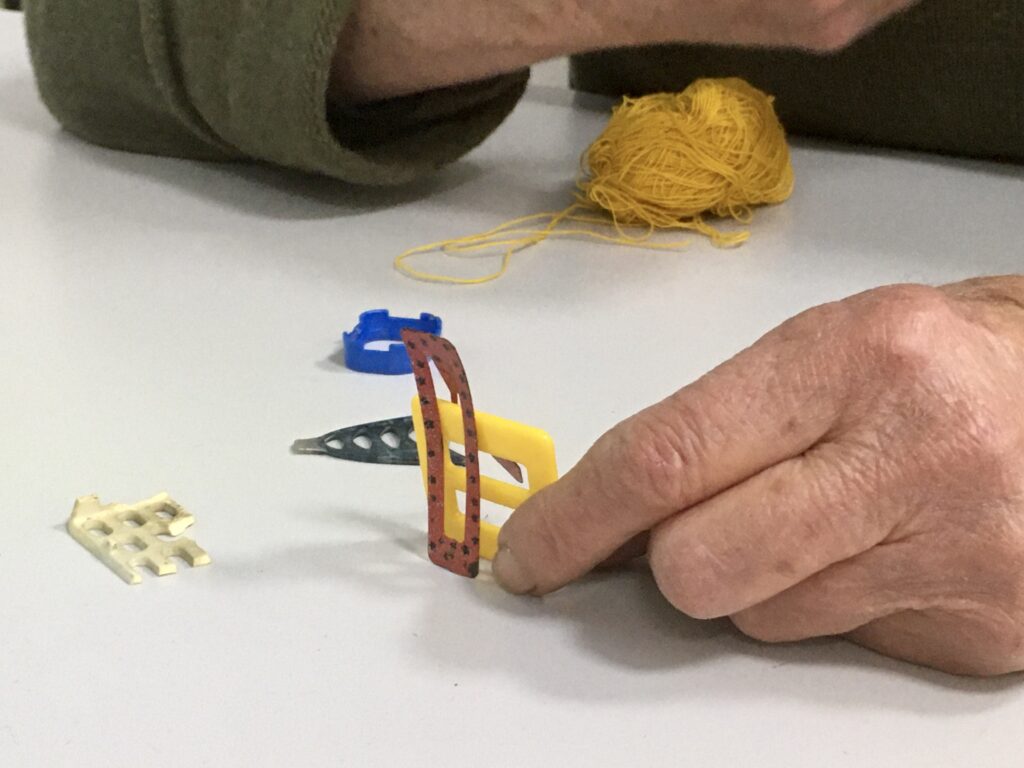
Play is an ideal strategy for a practical investigation into the concepts of pattern and chaos. On the one hand, it offers an intrinsically ‘hands on’ and collaborative experience that can generate pleasure and sidestep received thinking. But on the other, it brings with it its own interpretative structures. Roger Caillois (1958) divides play and games into four categories (competition, chance, mimicry and vertigo), but argues that these all operate between two modes: Ludus (promising logic, rules and solutions) and Paidia (the realm of pandemonium, agitation and laughter) – in other words, between the zones of pattern and chaos. Johan Huizinga (1970) sees play as setting up a privileged arena in which the rules of the everyday world are suspended not in favour of something illogical, but in order to propose and test original and speculative logic. This might be seen to connect to the way in which Gilles Deleuze (1969) sees apparently nonsensical statements not as the negation of sense, but the very space in which new meanings can be established: the primary condition of meaning is a moment when it appears to be lacking or under construction. These models describe the conditions of creative practice rather admirably, but they also offer ways of seeing pattern and chaos not so much as a binary pair but as the necessary situation for creating and informing each other. So while pattern always dreams its own collapse into formlessness, chaos is that fertile turmoil in which new, as yet unnamed patterns are being born, like stars from a nebula.
In a scenario such as Play = Object, play absorbs and exposes the assembled players, each to their own display of difference, irreverence, boredom, pleasure or curiosity. Through the liminal mesh between conscious and unconscious states, fabricated scenarios are interlaced through bodily actions and subtle gestures, aided and abetted by objects as tools, alerted to the taking of an unpredictable turn, willingly sustaining the unfathomable responses that are brought to life through play. Forwards, backwards, sideways, above here and below there, now exchanged now abandoned, objects come and go. Their multiplicity, the fact that no two are alike, invite a dialogue between structure and agitation. While authentic play always implies a movement, a dynamic of things teetering or not yet in formation – chaos is never immobile, observes Gaston Bachelard (1948: 59) – there are also moments of pause in the tumult of trouvailles: of stepping back to appreciate a singularity, a just-crystallised figure or an idea that has found form.
Way back, the verb ‘to play’ took the form of *dlegh-, which is to say ‘to engage oneself’. But here in this here-and-now space, once self-preoccupation has taken its turn, the potential of each mind’s eye is made visible to others, so that threads of object-conversation begin to form and the performative exchanges that shape the play that is theatre are set in motion. Mimicry or mirror-neurons are activated. Play is contagious. When we play together, one person’s actions or arrangements are perceived by others as open to transformation or chance operation. Chance is everywhere open to being brought into play. There is empathy in contagion, even as a play of difference is allowed. Perhaps there is no fear of taking liberties as a sense of freedom from ownership or rules grows apace. Even when driven by individual objects and subjects, this is less about things than relationships. Georges Didi-Huberman (2018: 5 and 48), drawing upon Baudelaire in the context of that unfinishable art historical constellation that is Aby Warburg’s Mnemosyne Atlas, notes how it is above all the faculty of imagination that is adept at revealing hidden relations, and how setting it to work demands play.
One person’s doing is another person’s undoing, as if play is insistent in its openness to change. All objects carry the potential to succumb to the undoing that is present in play; while their typical function or identity never disappears from view, objects can be transformed into little nothings or alternative somethings, thus the serious and dangerous might be re-figured as unknown, humorous, or decorative, for example. In the forest of surprises into which objects lead us in their unruly conversations, dark can become light and light can become dark, thus ‘the to-and-fro movement of play, in delaying concrescence and resisting closure, challenges binary logic by creating openings, imaginary in-between spaces where multiple speculations, and understandings, can emerge…’ (Garoian 2013: 62). One pattern leads to another, as each person’s pattern perception follows a different order or seeks to prevent a pattern from becoming subject to rituals or rules, as in a game. Patterns and potential narratives are interrupted. Although recognizable patterns and rhythms emerge from time to time, they stop short of becoming rule bound. Narratives change hands as fast as the objects. Chaos and pattern emerge as one and the same thing.
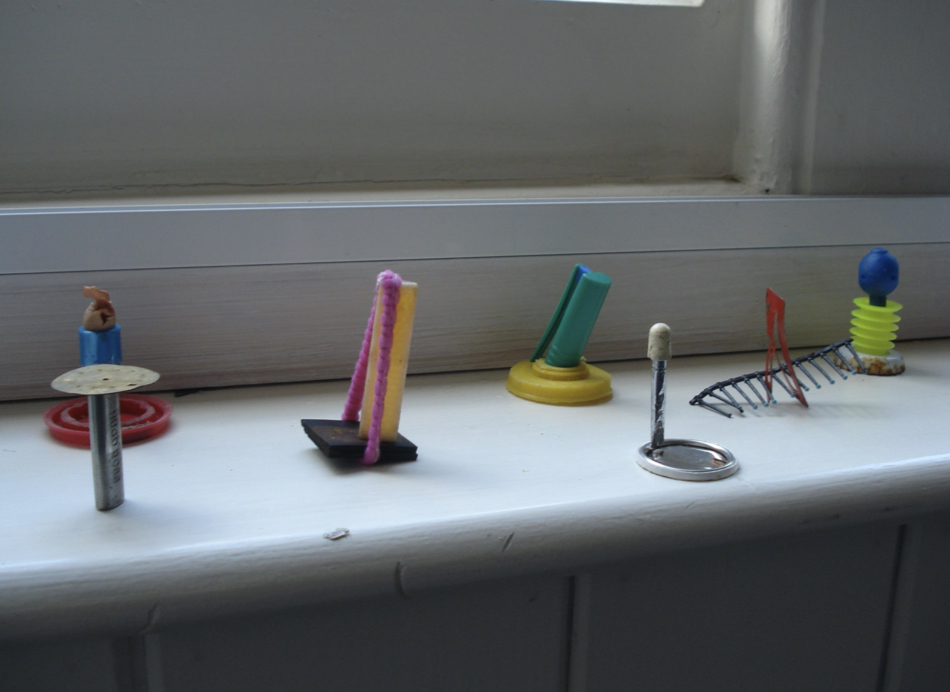
Ludic structures
The urge to organise, to categorise, to array is always strong, just as any Rorschach Test ink- blot, no matter how random, may be interpreted in line with the viewer’s feelings and predispositions. (The term for making these blots is klecksography, and the human impulse to discover patterns in any given data is apophenia, a term first coined as part of the clinical diagnosis of schizophrenia.) In Play = Object, an interaction of haptic, visual and spatial configurations, in dialogue between participants and with the given environment, gives rise to glimmers of sense and new knowledge, however hazardous. Patterns, rows, constellations; associations through shape, material, function and (especially) colour. In parallel, the urge to disorganise, to break and remake rules, to disrupt readings is also made manifest: playful and irreverent relocations, miniature couplings of dissonant objects and the rituals of losing, hiding or misplacing are powerful motors for nudging meaning from materials. Although, in part, ‘such ludic behaviour is enabled by the ostensible nonseriousness that is bracketed off from the exigencies of the mundane’ (Getsy 2011: xii), in this instance it is precisely in paying playful attention to (the material detritus of) the ordinary that the in-between of collaborative behaviour unfolds as dialogue.
Speculative interactions with space and place – in this instance, a rather generic institutional seminar/meeting room – began to evolve: under chairs, across window ledges, in corners of the carpet, as incongruous as lines of insects marching across a living room. Players observed how the mobile spaces between components could become as significant as the objects themselves: distances and fluid tensions in which materials become relations; how other objects in the room (chairs, electrical fittings) become activated and estranged, or drawn into new narratives; how the spaces of not-knowing begin to generate latent orders or parameters through the processes of filtering, discarding and array. And then there’s the sense of an animated motion and gathering of objects all by themselves, beyond our intervention: a kind of murmuration (as in flocks of starlings), mysterious and beautiful, obeying a logic that eludes prediction. There’s work to be done, at the same time, to forestall these games from becoming just a formal or aesthetic tinkering that ignores the material and political meanings of objects, to continue, as Neil Cummings proposes (1993: 28), ‘to frustrate the introduction of arbitrary sign exchange, and instead ambush the maximum of readings between the energy released on contact between things.’
The repurposing of things: once functional objects, abandoned in the creases of the street, now get their moment of carnival. And across the miniature puzzles and rituals of these communities of objects ran temporary communities of players: observing, questioning, comparing, intervening. Through a free play with apparently random fragments, objects and subjects could become, for a while at least, the mobile constellations of propositions: ideas and items diverging and colliding as though in a cloud chamber of relationships.
March 2016-May 2023
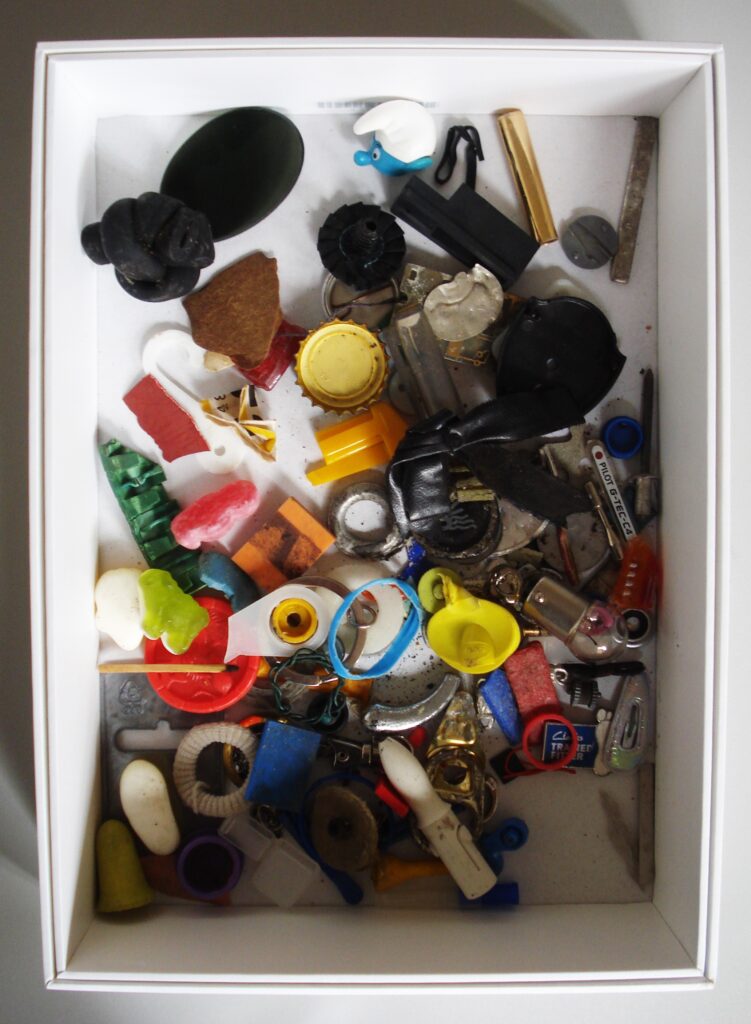
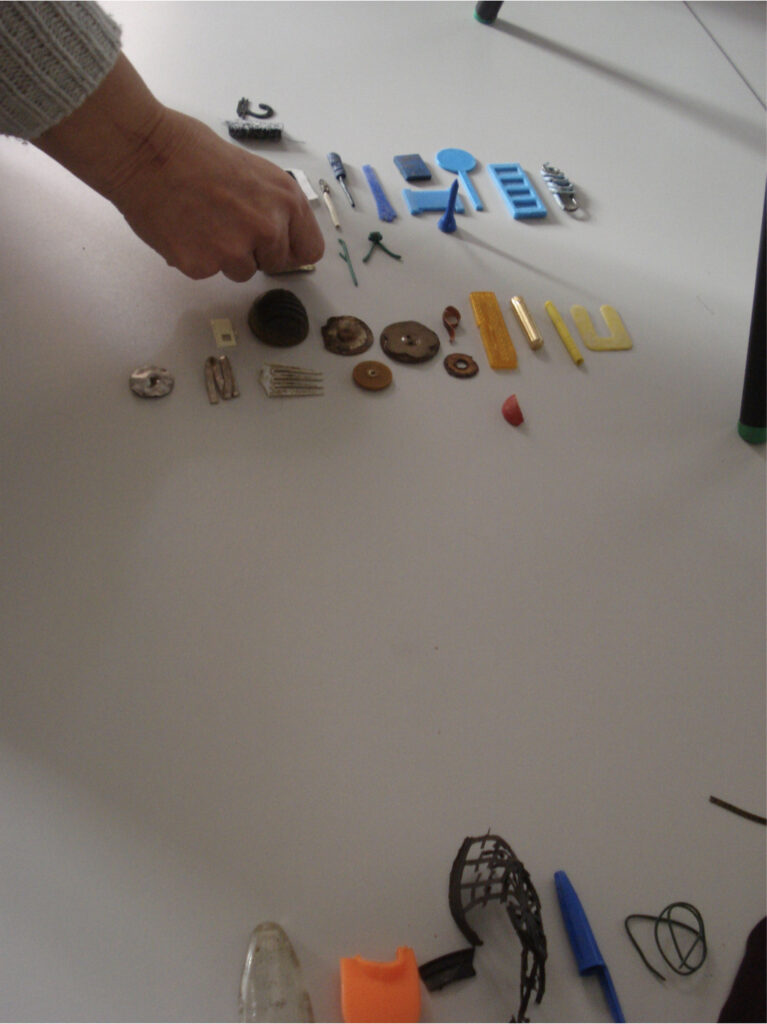
All images are from the workshops and were provided by the authors.
References
Gaston Bachelard (1948) La Terre et les rêveries de repos. Paris: Corti.
Roger Caillois (1958) Les jeux et les hommes. Paris: Gallimard.
Neil Cummings (1993) ‘Reading Things: The Alibi of Use’, in Sight Works, volume 3. London:
Chance Books; http://www.neilcummings.com/content/reading-things.
Gilles Deleuze (1969) Logique du sens. Paris: Minuit.
Georges Didi-Huberman (2018) Atlas, or the Anxious Gay Science. Chicago and London:
University of Chicago Press.
Charles R. Garoian (2013) The Prosthetic Pedagogy of Art. Albany, NY: SUNY Press.
David J. Getsy (Ed.) (2011) From Diversion to Subversion: Games, Play and Twentieth-Century Art. Pennsylvania: Penn State Press.
Johan Huizinga (1970) Homo Ludens: A Study of the Play-Element in Culture. London: Paladin.
Hermann Rorschach (1921) Psychodiagnostik. Bern: Medizinischer Verlag.
Krzysztof Fijałkowski is a lecturer, writer and artist with a long-standing interest in the history and ideas of the international surrealist movement, and teaches on the BA Fine Art programme at Norwich University of the Arts (UK). Recent publications have included contributions to The International Encyclopedia of Surrealism (joint editor and author, 2019), Objects of Desire: Surrealism and Design 1924–Today (2019) and The Situationist International: A Critical Handbook (2020). He has also published and exhibited with international contemporary surrealist groups.
Victoria Mitchell is a Research Fellow at Norwich University of the Arts (UK). She pursues a broad interdisciplinary approach to visual culture with reference to material, making, metaphor and meaning. She has co-edited (with Stephanie Bunn) The Material Culture of Basketry (Bloomsbury) and is co-editor (with Sarah Horton) of Pattern and Chaos in Art, Science and Everyday Life (Intellect Books, in press, 2023).
Pattern & Chaos: Norwich University of the Art’s interdisciplinary research group dedicated to the practice and theory of pattern, chaos and the spaces in between https://www.nuapatternandchaos.com
